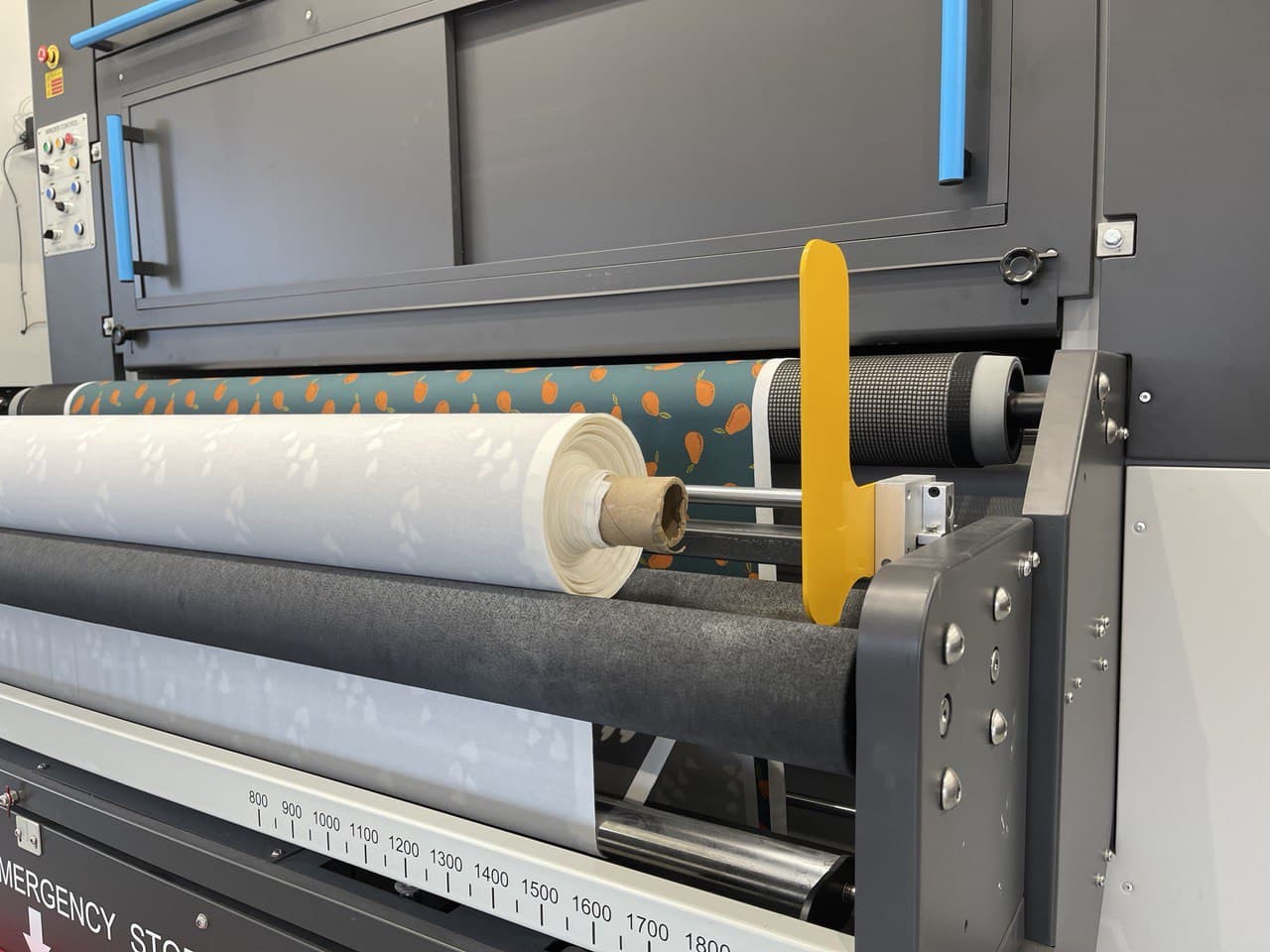When you are fabric shopping, what are the primary factors that you weigh in making your purchasing decision? Many sewing artists and designers let features such as price, quality, look, and feel guide their fabric purchasing decisions. And these are all legitimate factors that should be considered.
But there is one more piece to the purchasing puzzle that oftentimes is overlooked – the ethical piece. This has to do with where the fabric comes from, how it was produced, and what impact it had on people and the environment in its various stages of production. This is the issue of sustainable fabrics and we’re convinced it should play a role in the purchasing of fabrics.
What is Sustainable Fabric Sourcing?
Sustainable fabric sourcing is the practice of choosing fabrics that are produced in environmentally friendly ways while also ensuring the fair treatment of people throughout the whole process. Sustainable fabric sourcing can help to protect the environment, reduce waste, and improve human lives. There are many benefits to sustainable fabric sourcing, including reducing or eliminating water waste, decreasing climate change emissions, creating fair-wage jobs, and cutting back on production demands through higher-quality, longer-lasting products.

One of the ways to better understand sustainability in the fabric industry is to take a look at the unsustainable (or irresponsible) practices that are so common in all phases of fabric production.
What is Unsustainable Fabric?
So, where do unsustainable and irresponsible processes plague the fabric industry today? Let’s take a look.
Unethical and Unfair Labor Practices
Much of the world’s fabrics are produced in countries with little to no employment accountability, and in environments where employment is often focused on production at the expense of the individual. There are many modern industries that continue to be tainted by what essentially amounts to slave labor. The fashion industry is one of the worst, employing countless workers in inhumane conditions with little to no pay. Fabric sources, such as cotton, often use unethical labor to gain profit. This happens everywhere from the growth and harvesting of cotton in the fields to the factories processing the cotton and making it into fabric and includes both problems with unfair wages as well as poor working conditions that harm the health of the individual or put them in dangerous situations. The realities of how many individuals, and even children (through child labor), are dehumanized and abused in the production of fabric that supports the clothing and fashion industry is appalling.
Hurting the Environment
Fabric sourcing has environmental impacts as well, and many of today’s growth and production practices are bad for the environment. Caustic pesticides and other chemicals continue to be used throughout the world in the process of growing cotton, the milling of it, and printing or dyeing it. Generally, the fabric printing process is especially bad for the environment because of the large amounts of excess water used in the common methods of printing. This usage of water both depletes critical fresh water supply in many countries while also contaminating the fresh water through the large amounts of wastewater runoff. While the EPA heavily regulates and monitors the disposal of waste water in the United States, international practices vary wildly, leading to an incredible number of heavily polluted water sources.
Corporate Greed
Much of the cotton industry that supplies a lot of the world’s natural fiber cotton fabrics has been tainted by corporate greed at an expense both to the environment and the individual. A prime example of this is a tragic saga that unfolded in India in recent years.
In 2002 the American run company, Monsanto, took genetically-modified cotton seeds into India and convinced many farmers to invest in these seeds that were supposed to give them better crops than the regular seeds. However, this act had a tragic affect on many Indian farmers. The area where many of the GM seeds were distributed is now called the suicide belt. When the farmers realized that their crops were not turning out, and that they had a huge debt on their shoulders they chose to take their life. Sometimes the widows of the farmers took over the farm for them and eventually they committed suicide as well. In 2009 there were so many deaths that it amounted to about one farmer committing suicide every half an hour.
So why were these suicides so common? The answer lies in the seeds that Monsanto distributed. There were several things wrong with the seeds that Monsanto gave to these farmers. For one they were genetically modified so that they would not produce more seeds that could be planted the next year. Another issue was that the plants required twice as much water as regular crops do. India is a dry country where droughts are common. This meant the crops failed because of lack of water in addition to a strange parasite that grew on the plants. When the cotton farmers realized their crops were not being successful, they felt the huge weight of their debt and many chose to take their lives.
This is just one example of how much corporate greed can have devastating and long lasting effects on both the environment and people.
Supply Chain Problems
Another problem within the fabric industry that often creates instability is supply chain and logistical problems with international sourcing of fabric. This is a more subtle issue in the topic of sustainable fabrics but one that has been highlighted in the past few years as pandemics and international tensions have caused major bottlenecks and delays in international production and sourcing of fabric. Here in the United States, many sewing artists and small businesses have experienced major frustration and loss of sales due to their international fabric order getting held up in transportation.
Rising transportation costs and the ongoing amount of natural resources that are used in international shipping are other logistical factors that contribute toward unsustainability in the fabric industry.
5 Reasons Why We Support and Care About Sustainable Fabrics

So we’ve covered in detail the negative unsustainability in the fabric industry, now let’s focus on the positive; there are sustainable fabric alternatives! And as a fabric purchaser and custom fabric printer, we care about supporting sustainability in the industry. Here’s 5 reasons why we believe sustainable fabrics are important.
Sustainable Fabrics Promote Ethical Employment and Fair Wages
Sustainable fabrics are fabrics that are produced in settings where there is accountability and transparency around employee wages and working conditions. We care about supporting and promoting businesses that are treating all employees with dignity and helping invest in the wellbeing of the individual through employment.
As a custom fabric printer we put a high priority on purchasing our base fabrics from domestic fabric mills that are providing fair wages to employees in regulated work environments.
Sustainable Fabrics Reduce Waste
Another mark of sustainable fabrics is that they are produced in ways that reduce or eliminate harmful waste. As mentioned earlier, water waste is a huge problem in many common fabric printing methods. But there are viable alternatives that provide an even higher quality print.
We’re proud to print all our fabric on a printer that requires no water and is very environmentally clean. The Kornit printer that we use is Eco-Passport certified and CO2-neutral.
Sustainable Fabrics Are Not Toxic
Most fabrics that are considered sustainable are organic and are grown, milled, and printed in ways that ensure humans and the environment are not being harmed in the process. Sustainable fabrics avoid harmful chemicals and give individuals with skin sensitivities or allergies a safe option for clothing and other interactions with fabric.
We specialize in providing custom fabrics that are organic grown. Our printing process also uses an organic, GOTS approved, water-based ink that has incredible durability and color-fastness. This helps ensure that our products are both high quality and environmentally friendly.
Sustainable Fabrics Promote Domestic Production
Here in the United States, the standards of sustainability in the fabric industry are easiest achieved when fabric is grown, milled, and printed domestically. Domestic production uses less natural resources due to eliminating international shipping. It also provides higher accountability and provides greater economic stability. Whenever possible, we provide both American-grown and American-milled Fabrics so that our business is supporting sustainability.
Sustainable Fabrics Provide Small Business Sustainability
This one may be a little less obvious, but we’re convinced it’s relevant. Sustainable fabrics, especially domestically produced and printed ones, are less vulnerable to supply chain problems and less affected by global instability. This provides supply stability for small businesses and helps ensure that people can get their fabric in a timely manner.
As a print-on-demand fabric provider, we also can provide security for small businesses by ensuring that they can always get the fabric print they need in a quick and timely manner. We know how important this is and aim for a 2-3 day TAT on retail orders so that you can depend on your fabric being available when you need it. We believe this helps contribute toward sustainability in the fabric industry by helping support and sustain small businesses.
Ultimately, we care about sustainable fabrics for all of the above reasons. As a Christian family running a print on demand fabric business, we believe it is our duty to be wise stewards of the resources God has given us and the earth he created. Promoting and supporting sustainability in the fabric industry is one of the ways we can fulfill this duty. And we’re having fun doing it!
Below is a video that tells the story of our fabric printing company and details a bit more about our own journey into sustainable fabrics.
